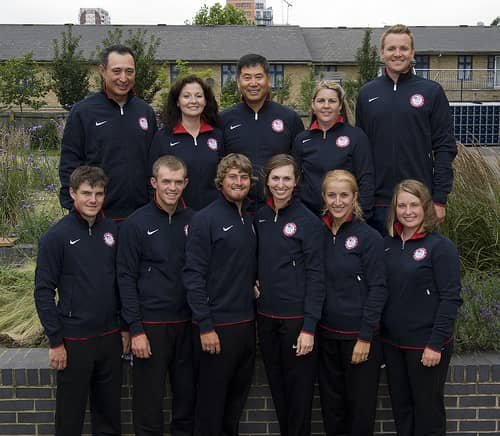Elite Archers: Lives of Dedication and Sacrifice
Archery Trade Association 08.06.12

As the first week of the 30th Olympiad ends and our USA Archery team members make their last appearances, everyone is asking them, “what now?” With several young archers on the team and many of us wanting to see the US increase our medal haul at the 2016 Games in Rio de Janeiro, I assumed many would be back in training soon. After all, isn’t that what world-class archers do?
What few of us know is that sports, at the highest levels, is not only a full-time job for the athlete but requires relocation and disruption of family relationships and education advancement. Even more, there are delays of the “normal” progression of life’s events. Most don’t finish high school with their friends or attend college or professional school, let alone build a career or get engaged, married or settle down to buy a home and start a family.
Moreover, athletes (and their parents) must be willing and able to find financial support for at least four years so the athlete has the security of knowing their Olympic dream is possible. The USA is the only country that does not provide funding for Olympic sports, which means groups like the United States Olympic Committee and USA Archery have to count private donations (such as those from Easton Foundations) to make ends meet. The athletes’ families also provide a major source of support because full-time jobs aren’t feasible given the athlete’s training obligations. Most employers can’t handle the irregular hours and frequent absences for a week or more to attend shooting events around the world. More difficult for an employer is the reality that a job extended to an athlete/employee is not an investment likely to pay long-term dividends for your company.
How much income does it take for Olympic hopefuls to fully commit to their dream? Not as much as you’d think, largely because the athletes themselves accept a meager standard of living. Most start by counting on the Olympic Training Center’s Resident Athlete Program in Chula Vista, Calif., for a bed, a room and three meals a day. After the essentials, most archers are happy to live life on the tightest of budgets. Frankly, most college kids or entry-level employees live a far more advantaged lifestyle than our elite archers.
Most archers do have sponsorship contracts to shoot specific brand of equipment, but the majority of that income is contingent on winning or doing well at major events. While these sponsorships carry some prestige, this kind of funding does not provide the security needed to budget beyond the next event. Having compensation tied to performance is the norm in sports. Yet one could argue that college athletes on scholarship have a level of support that allows for a normal lifestyle, while professional athletes — even at less lucrative levels with smaller followings —have base compensation that can sustain a reasonable standard of living.
At a time when we might think our elite archers would be committing to working harder and longer to prepare for the 2016 Olympic Games in Rio de Janeiro, they are, instead, distracted. While others are talking about marriage, families, careers and the kinds of pursuits most of us take for granted, these athletes must now pursue sponsorships and figure out how to piece together lives put on hold for the better part of four years. Many of us whose lives are “normal” don’t stop to consider that four years is a high school or college experience, a stint in medical or law school or the time it takes to parent a child from birth to nearly school age. Those who keep at it for eight, 12 or 16 years can quickly find themselves far out of step when compared to others in their generation.
For most athletes, at some point, it all ends. The constant stress of having to perform, improve or achieve at a high level wears on a person to the point they can break and finally give into pressure to “get on with their lives.” If they have had moments of great accomplishment, that’s sometimes enough to sustain them into the next phase of their lives. If not, I hope everyone they encounter will see their commitment as a rare commodity in today’s instant-gratification world.
I can see that elite sports are really about the pursuit of excellence over a long period of time which, in archery, means perfecting skills, physical and mental training and fine-tuning equipment to shoot a 10 every time. After watching our USA Archery Team this week, I can’t help but have a deep respect for these archers. Being around them is to appreciate the strength of character it takes to walk out on that range in front of thousands of fans and millions of viewers and compete: win, lose or draw. Most can’t comprehend that kind of pressure. Yet, they do more for archery and our industry than all our marketing and promotional campaigns combined. I hope you have a chance to meet them one day so you can see what I saw when I looked into their eyes: persistence and determination. That’s what I respect most.
This blog is republished with permission from the Archery Trade Association. To read Jay’s updates from London in real time, follow the Archery Trade Association’s blog here.

